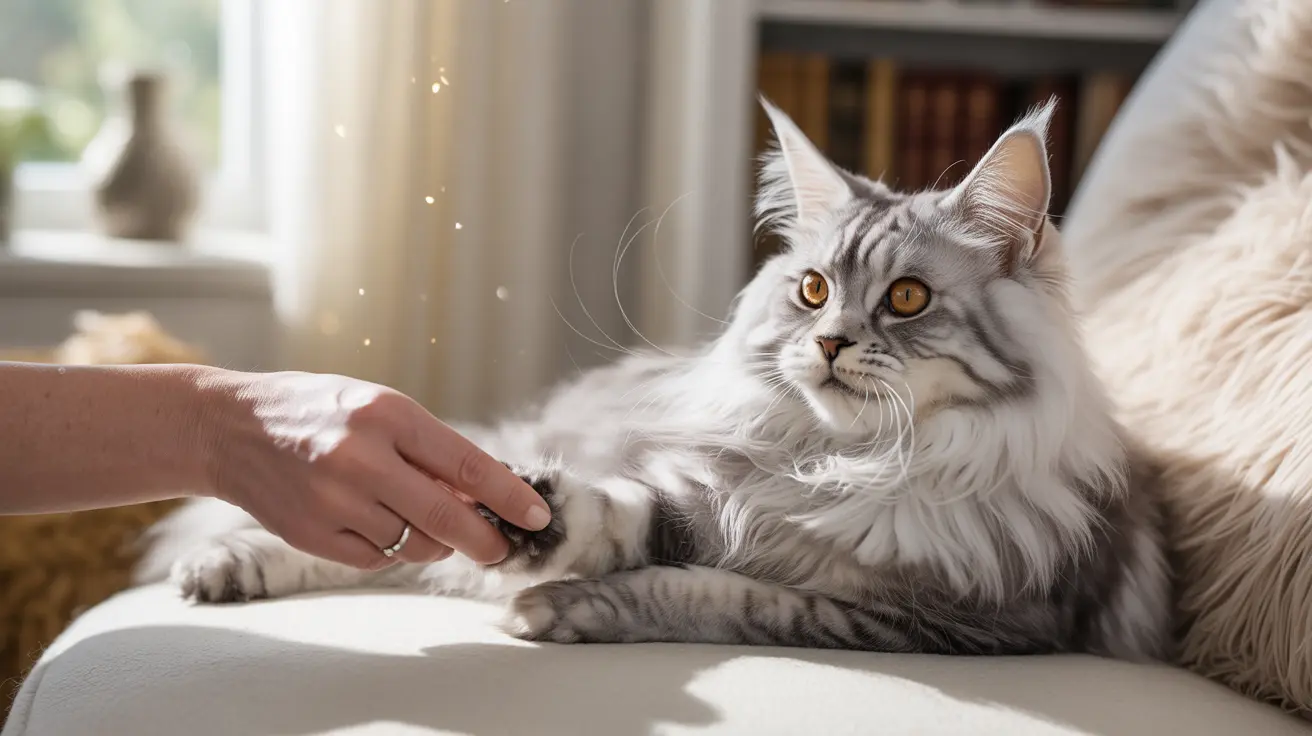The relationship between cats and death has intrigued humans for centuries, from ancient folklore to modern medical facilities. While cats' ability to sense death remains a fascinating subject, scientific research and documented cases provide compelling insights into how these perceptive animals behave around dying humans.
In this comprehensive guide, we'll explore the documented behaviors, scientific explanations, and notable cases that shed light on cats' remarkable sensitivity to human mortality. Understanding these behaviors can help families and caregivers better interpret their pets' actions during end-of-life situations.
The Oscar Phenomenon: A Remarkable Case Study
Perhaps the most famous example of a cat sensing death is Oscar, the therapy cat from a Rhode Island nursing home. Oscar gained international attention for his uncanny ability to predict patient deaths, reportedly accurately forecasting 50-100 deaths by curling up beside patients in their final hours. His behavior was so reliable that staff would notify families when Oscar chose to stay with a patient.
Oscar's case, documented in the New England Journal of Medicine, demonstrates how cats may exhibit specific behaviors when sensing impending death:
- Maintaining prolonged vigils beside dying patients
- Showing unusual focus and attention
- Remaining present until death occurs
- Quietly departing after the person passes
Common Behaviors Cats Display Around Dying Humans
Increased Affection and Attention
When cats sense approaching death, they often display heightened affection and attention toward the dying person. This may include:
- Refusing to leave the person's side
- Increased purring and physical contact
- Gentle kneading behaviors
- More frequent checking on the individual
Changes in Normal Routine
Cats typically demonstrate noticeable changes in their usual patterns when sensing death:
- Becoming more subdued or quiet
- Staying in unusual locations
- Displaying protective behaviors
- Showing increased vigilance
Scientific Explanations for Cats' Sensitivity to Death
Enhanced Sensory Capabilities
Cats possess extraordinary sensory abilities that may enable them to detect approaching death:
- 200 million odor-sensitive cells in their noses
- Ability to detect subtle changes in body temperature
- Sensitivity to changes in breathing patterns
- Perception of alterations in human behavior and routine
Chemical Detection
Scientific research suggests cats may detect chemical changes associated with terminal illness or approaching death:
- Recognition of specific pheromones
- Detection of metabolic byproducts
- Awareness of ketones and other biochemical markers
- Sensitivity to hormonal changes
How to Interpret Your Cat's Behavior
Understanding your cat's behavior during end-of-life situations can provide valuable insights:
- Monitor changes in your cat's normal routine
- Note increased attention toward specific individuals
- Observe any protective or vigilant behaviors
- Pay attention to unusual displays of affection
Frequently Asked Questions
What behaviors do cats show when they sense a human is nearing death?
Cats typically become more attentive, affectionate, and may refuse to leave the dying person's side. They often display increased purring, gentle physical contact, and maintain longer periods of close proximity.
How did Oscar the Cat predict patient deaths in a nursing home?
Oscar would visit patients hours before their death, curl up beside them, and remain present until they passed away. His behavior was so consistent that staff used his presence as an indicator to notify families of impending death.
Can cats really smell chemical changes in the human body before death?
Yes, cats' superior olfactory system, with 200 million odor-sensitive cells, enables them to detect subtle chemical changes in the body associated with terminal illness and approaching death.
Why do cats become more affectionate or clingy around dying people?
This behavior likely stems from their ability to sense physical and emotional changes, combined with their natural instinct to provide comfort and companionship during times of distress.
How can paying attention to a cat's behavior help families during end-of-life care?
Observing significant changes in a cat's behavior can alert families to deteriorating conditions and provide opportunities for meaningful gatherings. Additionally, the cat's presence often offers comfort to both the dying person and their loved ones.






